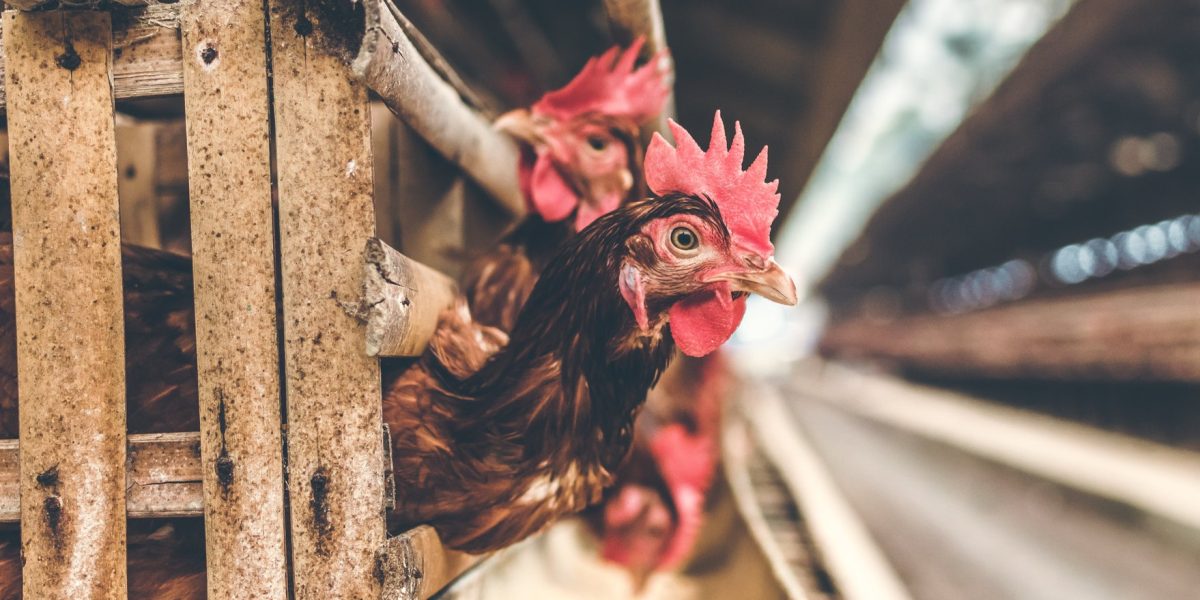Back in April, a Colorado dairy farmer came down with a high fever and vomiting. The hospital told the farmer not to worry too much, as avian flu rarely infects humans and the illness is usually treatable when it’s first caught. To be on the safe side, the USDA made an appointment to go to the dairy and test the chicken—if even one has bird flu, procedure follows that the whole flock needs to be culled.
But the USDA didn’t find bird flu in the farmer’s chickens. They found it in the cows.
As of October 29, the Center for Disease Control and Prevention (CDC) has identified the H5N1 strain of avian flu in 36 humans, 387 dairy herds, and over 10,000 chickens, with numbers continuing to rise. Only 15 of the people infected caught the illness through contact with birds; the rest caught it from sick cows. The jump H5N1 has made from birds to mammals is alarming scientists, who worry that this may be the start of another pandemic.
Avian influenza—bird flu—is a type-A virus, meaning that it can mutate quickly. This is why the virus, which is typically transmitted only among birds, can now infect humans, cows, and cats: H5N1 is a new mutation. Bird flu usually spreads among wild ducks, geese, swans, and storks, but these birds can spread this flu to chickens and turkeys as well.
Almost every human case of H5N1 is someone who works with livestock regularly, such as on a dairy or ranch, and none of the recent cases have been fatal, as bird flu can be easily treated with antiviral drugs found in any hospital. Yet this doesn’t mean fatal cases can’t happen—the last outbreak of an H5N1 variant that affected humans struck South Asia in 2003 and killed 142 people, or 54% of everyone that contracted it.
Farm workers can easily be exposed to H5N1 if they work with cows, chickens, or the feces of either creature. Currently, the USDA recommends all farm workers wear protective gloves, respirators, and face guards if they deal with cows or chickens. While they will kill chickens if the flock has a case (and reimburse the farmer for their loss), no infected cows are being killed. In fact, the USDA announced that two promising bird flu vaccines made for cows are currently being tested.
Heat from cooking kills the virus, so your next burger won’t make you sick (from bird flu, at least). Milk products like yogurt and butter are also safe as long as pasteurized milk is used; raw milk and raw milk products (which are illegal to sell in Colorado) would still carry infection risk. The CDC has also not observed the virus jumping from person to person yet, which is a promising sign that a pandemic may not be in sight.
However, there are two issues with detecting the true number of bird flu cases in humans. The first is that symptoms of H5N1 are the same as symptoms that come with any flu: fever, chills, eye redness, cough, sore throat, runny or stuffy nose, muscle aches, headaches, and tiredness. Since bird flu has the same symptoms as common influenza, cases may not be reported. Second, the testing of sick birds and cows can only be mandated by states, and some states like Missouri (where a human case was found in September) are avoiding widespread testing for political reasons.
So should the general public be worried about a bird flu pandemic. Not yet. Until cases of people infecting other people are identified, exposure risk is low, and unless the virus mutates further like it did in 2003, H5N1 is rarely lethal. However, there are some easy ways you can avoid contacting not just bird flu but any kind of flu:
- Stop touching your face: Bird flu can be caught through the nose, eyes, or mouth, which means it needs to be inhaled or direct contact has to be made. So don’t touch your face. If someone touches the virus and then touches their face, they can get the flu, but if that same person thoroughly wash their hands before touching their face, they are unlikely to get sick. Speaking of which…
- Wash your hands regularly: The best way to prevent illness to wash your hands with soap and water for at least 20 seconds before eating, before touching your face, and after interacting with anything that may have other people’s germs on it. While hand sanitizer can also help, washing with soap is both healthier for your skin (the alcohol in sanitizer dries skin out) and better for dealing with cold weather.
- Cover your mouth: Most flus are spread through the virus becoming airborne and another person breathing it in. By covering your mouth with a mask or hand, you can keep germs from getting in your mouth and nose and (if you are sick) escaping out your mouth and nose.
- Get a flu shot: The best protection against the flu is getting a seasonal flu shot each year. While the flu inoculation isn’t designed for bird flu specifically, it still offers some level of protection against all types of influenza.
- Avoid contact with farm animals: All bird flu cases so far have come from close contact with livestock, and this is also the case for many other illnesses like H1N1 and monkeypox. Avoid contact with wild animals and livestock, but if you can’t, wear protective gear on your face and hands.
- Avoid raw milk and undercooked meat: While heating infected milk and meat kills any pathogens, viruses can still live in undercooked or raw meat and milk. Do not consume uncooked meat or unpasteurized milk, and if working with raw meat or milk, use protective gear to avoid exposure.
- Stay home if you’re sick: Finally, if you are sick, stay home and rest. Your body generates a fever to kill the virus inside you, and this makes you weak because it saps your energy. To let your body do it’s thing and heal you, you need to bundle up, rest, and ingest plenty of liquids and vitamin-rich foods. Pushing yourself to go out and go to school or work prevents this healing. Plus, if you stay home, you won’t infect your friends.





















































